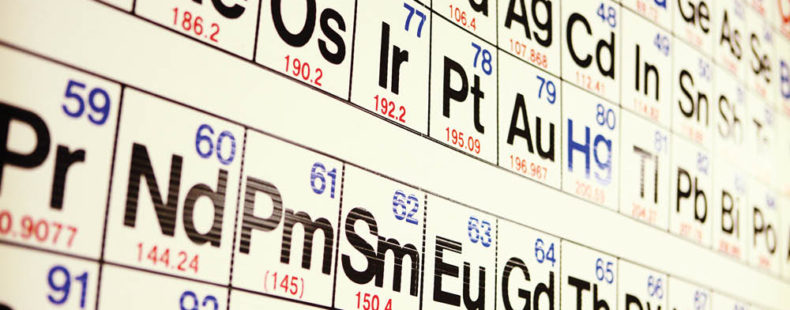In 2011, the International Union of Pure and Applied Chemistry (IUPAC) recognized the discovery of two new chemical elements: flerovium and livermorium. With the chemical symbols of Fl and Lv, these names became official in 2012.
Until the discovery of these predicted elements occurred, they were known as ununquadium and ununhexium, which is scientific Latin for 114 and 116, respectively.
These numbers correspond to their atomic numbers, or the number of protons in the nucleus of an atom. The periodic table of elements is organized around atomic numbers. Hydrogen has one proton, gold 79, flerovium 114, to name a few.Ununhexium is a mouthful, if perhaps exotic- or futuristic-sounding. But, what about flerovium and livermorium? How did they get their names?
How are chemical elements named?
The common elements like carbon, helium, and iron—many of which became chemically understood in the 1600–1800s—were named for common things by the scientists who described or discovered them, often on the basis Greek, Latin, or Germanic words.
Name choices were inspired by where the element is found or some other defining characteristic. Carbon comes from the Latin for “charcoal.” Helium comes from the Greek helios, “sun.” Iron is from a Germanic root for the heavy metal. And, did you know cobalt comes from a German word meaning “evil spirit”?!
Unlike common elements, newer elements are synthesized in a lab; they are not observed in nature. They are very unstable and quickly dissolve into other elements.
Many of these elements, discovered in the 19th and 20th centuries, are eponyms, named in honor of important scientists, such as curium (for Marie Curie) or einsteinium (for Albert Einstein). They are sometimes toponyms, too, named for places (of discovery), as americium.
In a 100-plus-paged manual, the IUPAC lays out it recommendations for the naming of chemical substances. When it comes to new elements, the IUPAC invites discoverers to propose names, which it then considers and puts up for approval. For these names, the IUPAC observes tradition and allows new elements to be named after:
- A mythological concept or character (including an astronomical object)
- Mineral or similar substance
- Place or geographical region
- Property of the element
- Scientist
What are the names of some of the most recently discovered chemical elements?
In 2011, the IUPAC approved the name of three elements according to its guidelines:
- darmstadtium (Ds, element 110, IUPAC placeholder name ununnilium), after Darmstadt, Germany, near the lab where it was discovered
- roentgenium (Rg, element 111, IUPAC placeholder name unununium), after German scientist Wilhelm Röntgen, who first detected X-rays
- copernicium (Cn, element 112), after the great Polish astronomer Nicolaus Copernicus
As for flerovium, it takes its name from its place of discovery: Russia’s Flerov Laboratory of Nuclear Reactions. The Flerov Lab was named for a Russian physicist, Georgy Flerov, who discovered the spontaneous fission of uranium.
And livermorium? Livermorium was discovered at Lawrence Livermore National Laboratory in Livermore, California. It’s just outside of San Francisco.
Other new additions to the periodic table
In 2016–17, more elements were confirmed and named:
- nihonium (Nh, element 113): after Nihon (a Japanese name for the country), where it was discovered
- moscovium (Mc, element 115): after a Latin form of Moscow (Oblast), where it was discovered
- tennessine (Ts, element 117): after the state of Tennessee, where important work was done in discovering the element
- oganesson (Og, element 118): after Yuri Oganessian, for a Russian physicist influential in the work of synthesizing superheavy elements
What might element 119, which the IUPAC calls ununennium for now, be named if it’s synthesized?














